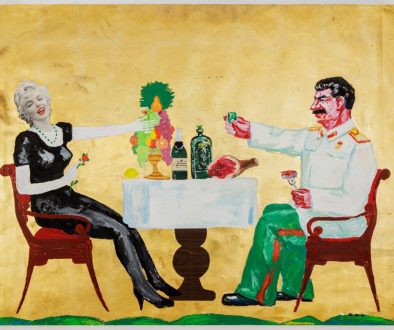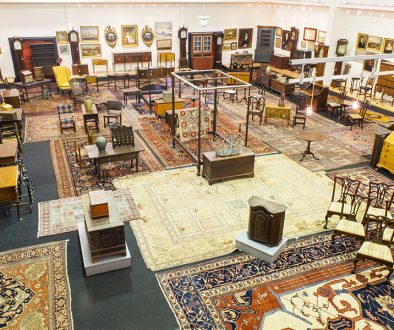Melchoir Fordney: The story of a Pennsylvania master gunsmith and one of America’s first insanity pleas.
If you met Pook & Pook, Inc.’s Vice President Jamie Shearer at a gun show or exposition recently, he has probably shown you a long rifle coming up for auction and offered to tell you the story of its maker, famed Lancaster, Pennsylvania gunsmith, Melchoir Fordney. It might have seemed like an overblown tall tale, but it wasn’t. In fact, the odd circumstances surrounding Fordney’s death are just as wild as they are true.
Pennsylvania (or Kentucky) long rifles are a truly American art form. Used by frontiersmen, their long barrels and interior rifling made them much more accurate than their European contemporaries. Fordney’s work in the early 19th century fell under the Golden Age of Pennsylvania long rifles and his weapons were as intricately beautiful as they were useful. However, the gunsmith’s career, and his life, were cut short when he was murdered by his neighbor, John Haggerty. Haggerty murdered Fordney with an axe and pleaded not guilty by reason of insanity. There was an English precedent for this defense, but it was largely untried in America. Haggerty’s lawyers had a legitimate reason for this plea. Based on his statements, Haggerty attacked Melchoir Fordney, his wife, and child because of trouble with Haggerty’s talking horse.
One evening in 1847, John Haggerty came into Fordney’s shop and asked him to shoot his (Haggerty’s) horse. Fordney declined, causing Haggerty to grab a gun from the shop and attempt to shoot at the horse twice, but the gun did not fire. Enraged, he then secured an axe from his house next door and ran into the gun shop after Fordney, brandishing his axe. A witness reported that “the back part of Fordney’s head was entirely cut off, his legs were both broken, and marrow stuck in his pantaloons when taken off, one arm was broken, blood over the floor, wall and ceiling.” Haggerty also killed Fordney’s wife, Catherine Tripple, and struck his six-year-old daughter, who later recovered from temporary paralysis.
The gruesome scene had caused quite a stir and it did not take long for Haggerty to be apprehended. When questioned, he reported seeing strange things, including his horse climbing a tree and tormenting him. The horse occasionally shifted forms to become a dragon or the Antichrist. He described his horse and goat fighting in the tree in accordance with an apocalyptic battle, one in which his chickens represented Martin Van Buren. Haggerty seemed confused as to where the axe or the Fordney family fit in, and his reports of the incident were rambling, contradictory, and long-winded enough to fill up eighty-five pages of manuscript with accounts and hallucinations.
Upon examining Haggerty, Dr. Francis Burrowes noted that he had an indentation in his head from a previous injury. Dr. Burrowes said that he did not consider Haggerty “perfectly sane at the time,” and a group of doctors were called in to evaluate his skull fracture. They concluded that insanity did not usually follow such a head injury, but it was not impossible.
Despite Haggerty’s novel insanity defense, the jury found him guilty of murder in the first degree and he was hung. To determine if they made the right judgement, doctors investigated Haggerty’s skull after death, noting that “after the most diligent search, no defect was apparent.” The report went on to say that “the functions of the brain were in no manner disorganized, and every physician present, on being respectively asked, gave it as his solemn opinion that the injuries to the deceased’s head, to which his malconduct had been attributed, did not exist in fact.” Haggerty’s brain looked normal and outwardly healthy, meaning that he was not, in their understanding, insane.
The account of John Haggerty, his talking horse, and the sad fate of the Fordney family are most often remembered when viewing a Melchoir Fordney long rifle. What stories are hiding behind your antiques?
Sources:
Kendrick Eshelman III, M.D., “A History of Psychiatry in Lancaster County, Pennsylvania (Until the year 2000),” The Journal of Lancaster County’s Historical Society, vol. 103, no. 3, Fall, 2001, revised August 20, 2014, reprinted at http://edwardhandmedicalheritage.org/images/A%20HISTORY%20OF%20PSYCHIATRY%20revised%208_20_14.pdf
Lancaster Examiner & Herald, January 27, 1847.




